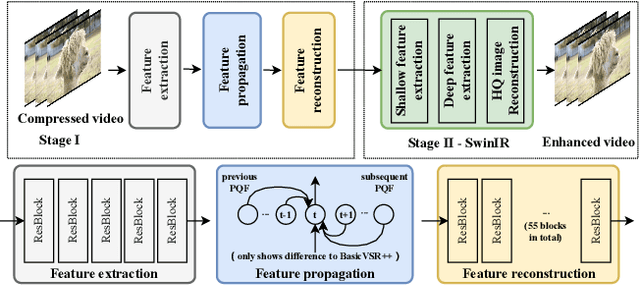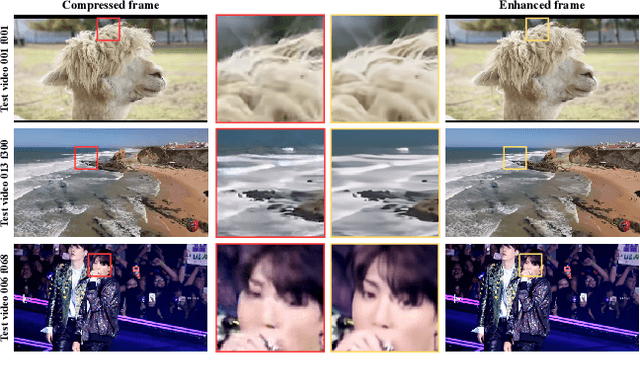Dong Jiang
Multi-Agent Generative Adversarial Interactive Self-Imitation Learning for AUV Formation Control and Obstacle Avoidance
Jan 21, 2024Abstract:Multiple autonomous underwater vehicles (multi-AUV) can cooperatively accomplish tasks that a single AUV cannot complete. Recently, multi-agent reinforcement learning has been introduced to control of multi-AUV. However, designing efficient reward functions for various tasks of multi-AUV control is difficult or even impractical. Multi-agent generative adversarial imitation learning (MAGAIL) allows multi-AUV to learn from expert demonstration instead of pre-defined reward functions, but suffers from the deficiency of requiring optimal demonstrations and not surpassing provided expert demonstrations. This paper builds upon the MAGAIL algorithm by proposing multi-agent generative adversarial interactive self-imitation learning (MAGAISIL), which can facilitate AUVs to learn policies by gradually replacing the provided sub-optimal demonstrations with self-generated good trajectories selected by a human trainer. Our experimental results in a multi-AUV formation control and obstacle avoidance task on the Gazebo platform with AUV simulator of our lab show that AUVs trained via MAGAISIL can surpass the provided sub-optimal expert demonstrations and reach a performance close to or even better than MAGAIL with optimal demonstrations. Further results indicate that AUVs' policies trained via MAGAISIL can adapt to complex and different tasks as well as MAGAIL learning from optimal demonstrations.
Natural Adversarial Patch Generation Method Based on Latent Diffusion Model
Dec 27, 2023Abstract:Recently, some research show that deep neural networks are vulnerable to the adversarial attacks, the well-trainned samples or patches could be used to trick the neural network detector or human visual perception. However, these adversarial patches, with their conspicuous and unusual patterns, lack camouflage and can easily raise suspicion in the real world. To solve this problem, this paper proposed a novel adversarial patch method called the Latent Diffusion Patch (LDP), in which, a pretrained encoder is first designed to compress the natural images into a feature space with key characteristics. Then trains the diffusion model using the above feature space. Finally, explore the latent space of the pretrained diffusion model using the image denoising technology. It polishes the patches and images through the powerful natural abilities of diffusion models, making them more acceptable to the human visual system. Experimental results, both digital and physical worlds, show that LDPs achieve a visual subjectivity score of 87.3%, while still maintaining effective attack capabilities.
NTIRE 2022 Challenge on Super-Resolution and Quality Enhancement of Compressed Video: Dataset, Methods and Results
Apr 25, 2022



Abstract:This paper reviews the NTIRE 2022 Challenge on Super-Resolution and Quality Enhancement of Compressed Video. In this challenge, we proposed the LDV 2.0 dataset, which includes the LDV dataset (240 videos) and 95 additional videos. This challenge includes three tracks. Track 1 aims at enhancing the videos compressed by HEVC at a fixed QP. Track 2 and Track 3 target both the super-resolution and quality enhancement of HEVC compressed video. They require x2 and x4 super-resolution, respectively. The three tracks totally attract more than 600 registrations. In the test phase, 8 teams, 8 teams and 12 teams submitted the final results to Tracks 1, 2 and 3, respectively. The proposed methods and solutions gauge the state-of-the-art of super-resolution and quality enhancement of compressed video. The proposed LDV 2.0 dataset is available at https://github.com/RenYang-home/LDV_dataset. The homepage of this challenge (including open-sourced codes) is at https://github.com/RenYang-home/NTIRE22_VEnh_SR.
FSD-10: A Dataset for Competitive Sports Content Analysis
Feb 09, 2020



Abstract:Action recognition is an important and challenging problem in video analysis. Although the past decade has witnessed progress in action recognition with the development of deep learning, such process has been slow in competitive sports content analysis. To promote the research on action recognition from competitive sports video clips, we introduce a Figure Skating Dataset (FSD-10) for finegrained sports content analysis. To this end, we collect 1484 clips from the worldwide figure skating championships in 2017-2018, which consist of 10 different actions in men/ladies programs. Each clip is at a rate of 30 frames per second with resolution 1080 $\times$ 720. These clips are then annotated by experts in type, grade of execution, skater info, .etc. To build a baseline for action recognition in figure skating, we evaluate state-of-the-art action recognition methods on FSD-10. Motivated by the idea that domain knowledge is of great concern in sports field, we propose a keyframe based temporal segment network (KTSN) for classification and achieve remarkable performance. Experimental results demonstrate that FSD-10 is an ideal dataset for benchmarking action recognition algorithms, as it requires to accurately extract action motions rather than action poses. We hope FSD-10, which is designed to have a large collection of finegrained actions, can serve as a new challenge to develop more robust and advanced action recognition models.
Color Recognition for Rubik's Cube Robot
Jan 11, 2019



Abstract:In this paper, we proposed three methods to solve color recognition of Rubik's cube, which includes one offline method and two online methods. Scatter balance \& extreme learning machine (SB-ELM), a offline method, is proposed to illustrate the efficiency of training based method. We also point out the conception of color drifting which indicates offline methods are always ineffectiveness and can not work well in continuous change circumstance. By contrast, dynamic weight label propagation is proposed for labeling blocks color by known center blocks color of Rubik's cube. Furthermore, weak label hierarchic propagation, another online method, is also proposed for unknown all color information but only utilizes weak label of center block in color recognition. We finally design a Rubik's cube robot and construct a dataset to illustrate the efficiency and effectiveness of our online methods and to indicate the ineffectiveness of offline method by color drifting in our dataset.
 Add to Chrome
Add to Chrome Add to Firefox
Add to Firefox Add to Edge
Add to Edge